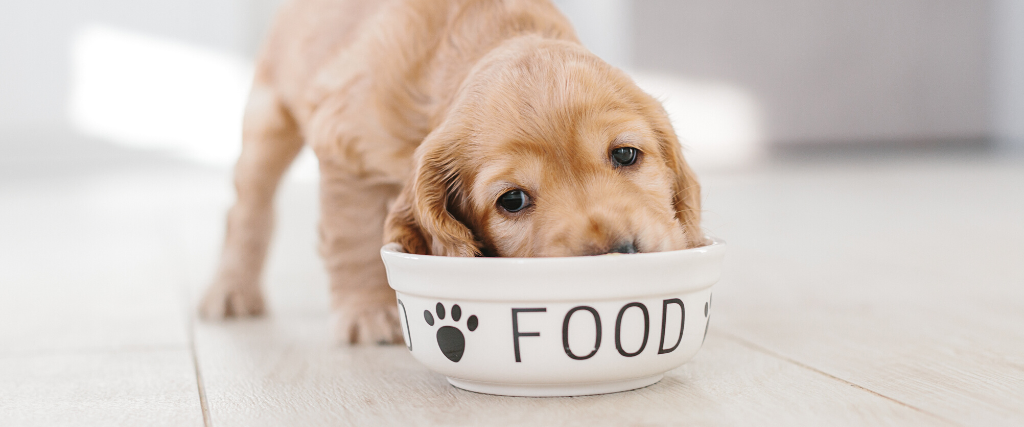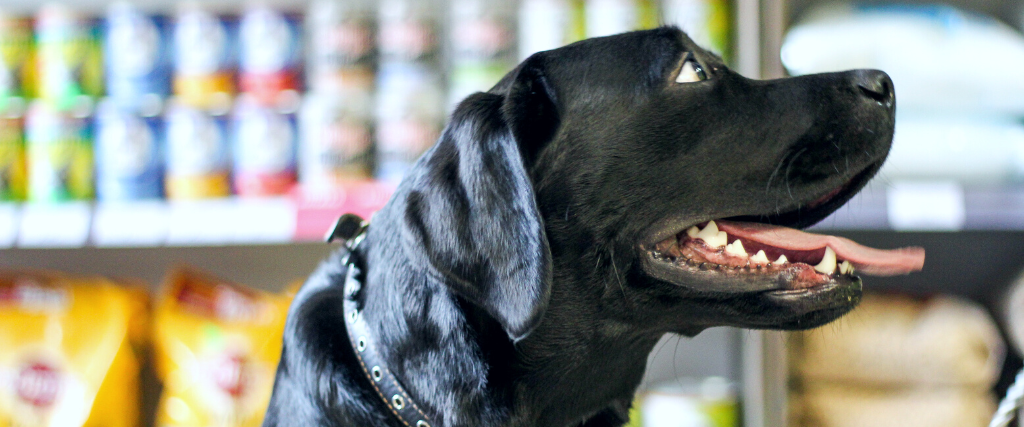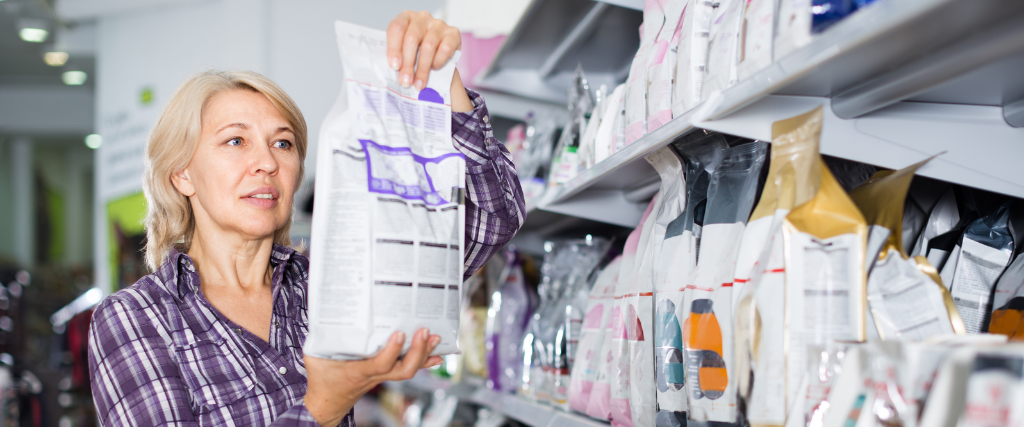Finding a quality diet appropriate for your pets body condition and life stage can be a challenge, and basing your choice on the pretty pictures on the front of the bag of food wont help. Neither will be basing your choices on flashy advertising copy splashed across the front of the bag.
Misleading Advertising Terms
Im not picking on this diet, its just the first one I found when I googled natural pet food.
Here are the first four things I see wrong with one of the bags I found, right off the bat:
- "Natural" - "a feed or ingredient derived solely from plant, animal or mined sources that have not been produced by a chemically synthetic process". OK, so the chicken meat inside this bag came from an actual chicken. Big hairy deal.
- "Balance" - every last commercial pet food in the store lives by the same laws, and must be complete and balanced, because AAFCO the Association of American Feed Control Officials says so. The term "balance" or "natural balance" is therefore meaningless.
- "Original Ultra" and "Ultra Premium" (or for that matter, "Holistic", "Human Quality" or "Human Grade") non-regulated terms that mean absolutely nothing.
Ingredient proportions
The hallmark rule of thumb when evaluating a diet, has always been to consider the order in which the ingredients are listed on the bag. For instance, if a pet food's first three ingredients are listed as chicken, corn, barley, one knows that there is more chicken than anything else in this diet, followed by corn, followed by barley. This is a rule.
However, there are exceptions, primarily based on water content.
QUIZ: Here are two diets. Which one contains more protein?
DIET A: Chicken, corn, barley
DIET B: Corn, chicken meal, barley
If you said DIET A contains more protein, there is a strong possibility you would be incorrect.
Why?!
Raw chicken contains about 75% water.
Chicken meal, which is chicken minus water and fat, contains only about 10% water. Think of chicken meal like beef jerky - concentrated chicken.
Therefore, 4oz of chicken meal would contain about the same amount of protein as 1.8 pounds of wet, raw chicken.
The ingredient list, however, must list the diet containing raw chicken as containing more "chicken" than a diet containing concentrated chicken meal, because wet raw chicken weighs more than chicken meal does.
Make sense?
Therefore, ingredient lists are a guide, but there is a better measure.

Guaranteed Analysis
Every bag of pet food sold in the US is required to have a section that details the "guaranteed analysis" of the food.
This lists the percentage of each of the nutrients in the food. The minimum percent of crude protein and crude fat, and the maximum percent of crude fiber and moisture are always required.
(Carbs can be estimated by this equation: 100 protein fat fiber moisture)
Therefore, comparing the guaranteed analysis of two pet foods side to side is always a more reliable indicator of relative nutrients than the ingredient list.
Carbohydrates / Grain Free
This is a real sticking point for a lot of people, so I'll make it very clear.
Every pet food sold in the US contains roughly the same amount of carbohydrates (usually about 40%-50% of the diet).
Grain free does not mean low-carb.
Grain free diets substitute healthy whole grains for less healthy starches like potato, peas, lentils, and other high-starch carbs.
For the vast majority of dogs who do not have celiac disease, grain free diets offer no health benefits over diets containing healthy whole grains.
The truth about guaranteed analysis
Despite what the media wants you to think, most dog foods contain essentially the same basic nutrients, in about the same proportions. Just about every dog kibble in the whole world contains approximately:
20-25% protein
13-20% fat
4-12% fiber
10% moisture
40% carbohydrate
So variations between diets are largely based on subjectives like protein "quality" and carbohydrate "quality", which are very loosely regulated and highly confusing terms.

Calorie Content
The vast majority of America's pets are overweight.
Therefore, it makes far more sense to make your primary determination of which food to feed, based primarily on the calorie count of the diet.
Many diets make finding out how many calories are contained in a cup of their diet, very, very, very difficult. AAFCO does not require pet food companies to list the calorie count of their diets on the bag.
Lucky for you, there exists an Association for Pet Obesity Prevention which breaks down calorie counts.
Recommendations
Choosing your pets ideal diet - STEP 1, Calories
Use this handy dandy body condition score chart to decide how overweight or underweight your pet is, then choose a new diet that is higher or lower in calories.
Worry much, much later about protein percentage, protein source, carb source, whole grain vs grain free, etc etc etc ad nauseum.
Get your pet to a healthy body weight and youll prevent 80% of diet-related problems that we see at our Indianapolis vet clinic.
Choosing your pets ideal diet - STEP 2, Essential Fatty Acids
Once your pet is at an ideal body weight, if then you're noticing a problem - poor coat, for instance then move on to a Omega-3 / Omega-6 primer. After obesity, essential fatty acid imbalance is the second most common nutritional problem we see. Supplementing your ideal-body-weight pet's quality diet with an appropriate balance of EFA's will solve about 95% of any and all problems you might ever see related to diet. Unless your pet has a food allergy, then the best you can do for your pet is to seek a treatment from your veterinarian.
A great resource on what foods have been formulated, tested and meet the highest of standards based on scientific research you can look on the WSAVA (World Small Animal Veterinary Association) website under Global Nution Committee.
If you have more questions or concerns about your pets food, schedule an appointment with your veterinarian. Bring in your current bag of food and see if it is the right diet for your pet's needs.
The Drake Center for Veterinary Care, a staple in Encinitas, CA, is a trusted AAHA-accredited animal hospital. The Drake Center loves being a source of information for all pet owners across the country however if you have any questions regarding pet care and do not live in Encinitas, CA or surrounding cities, we encourage you to contact your local veterinarian.

